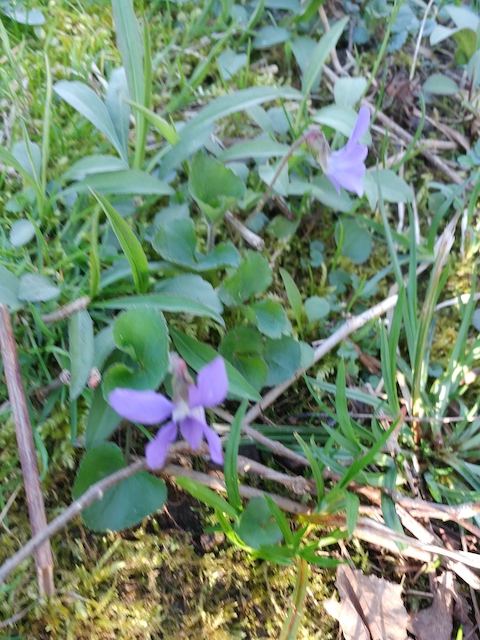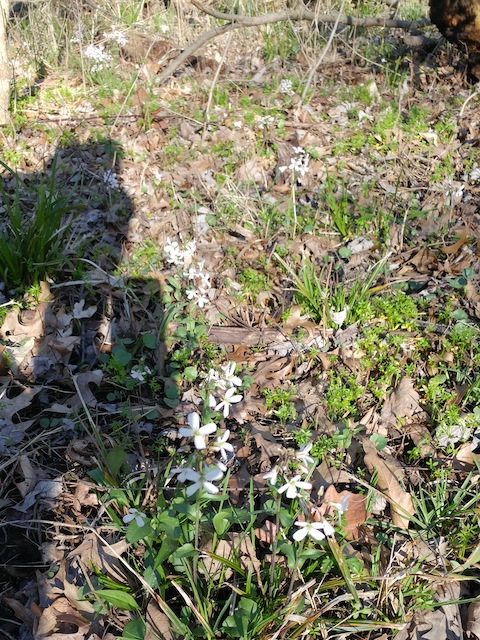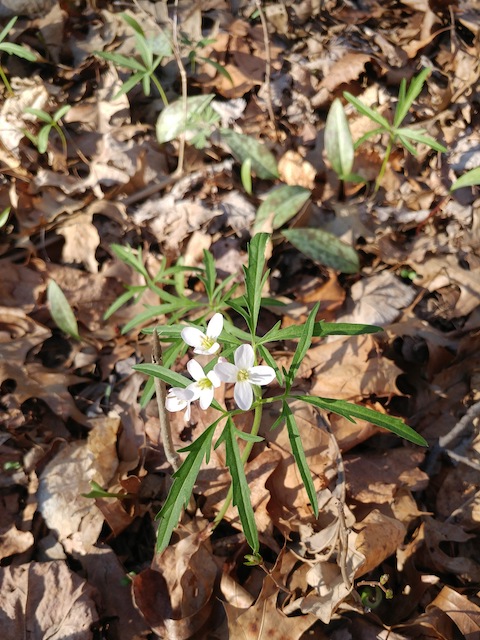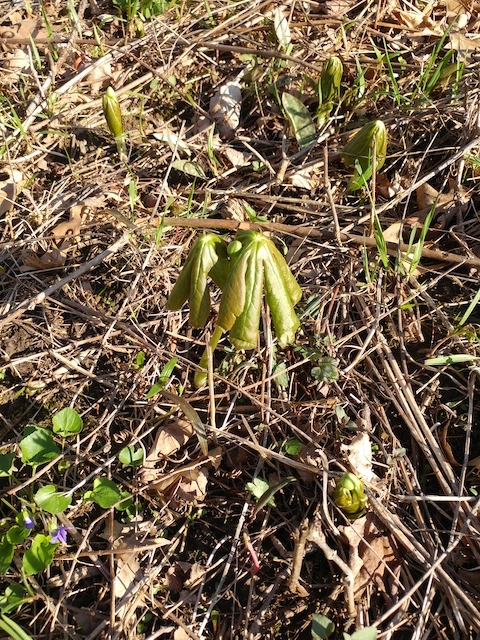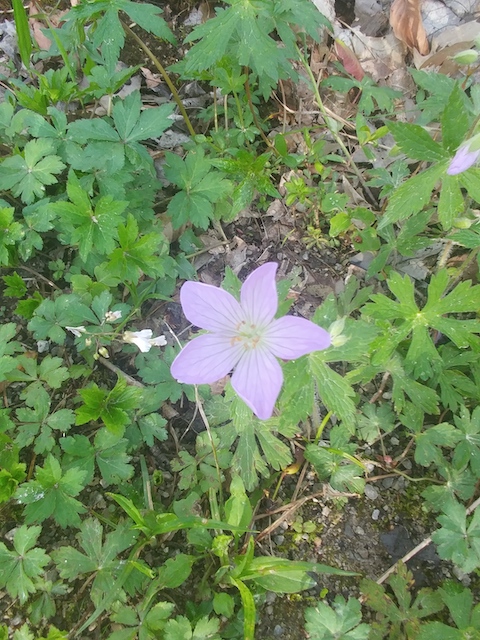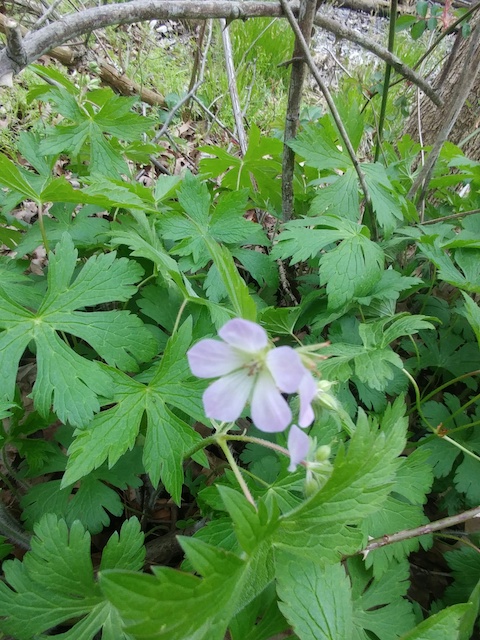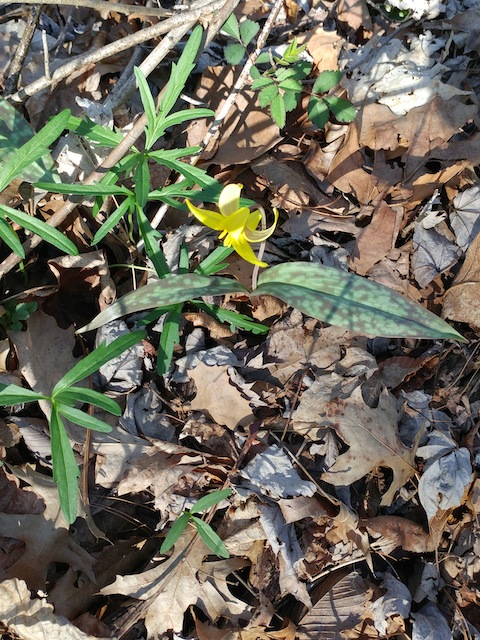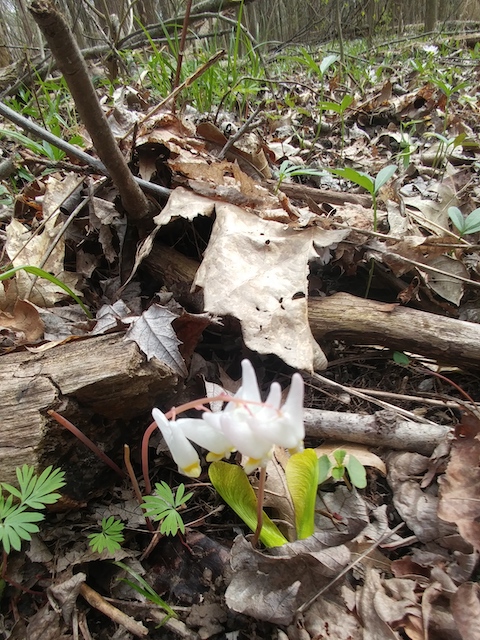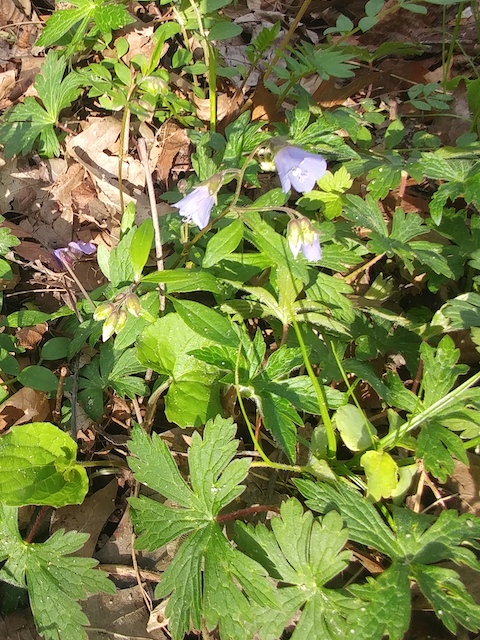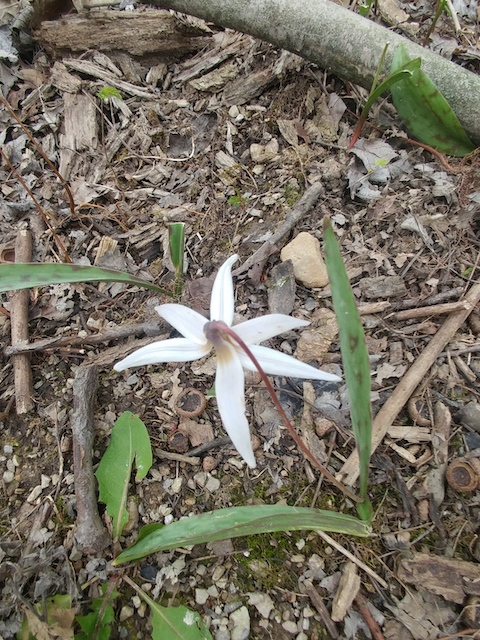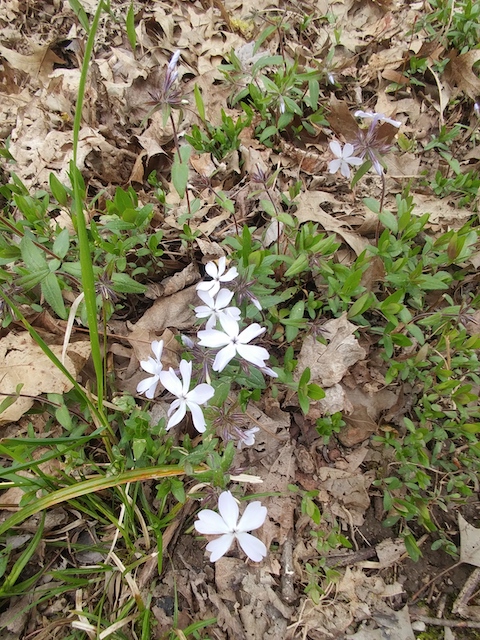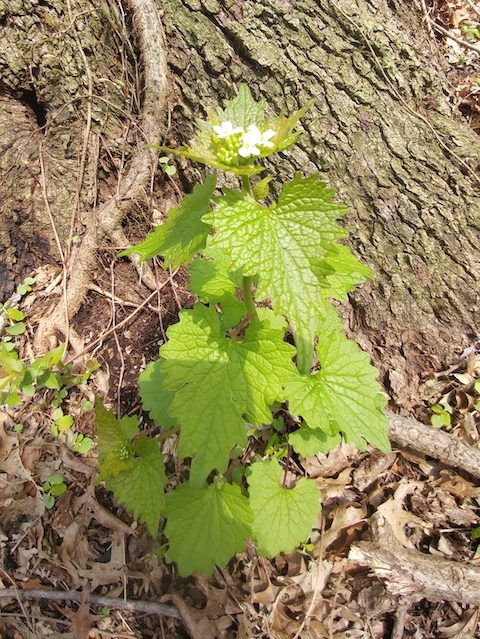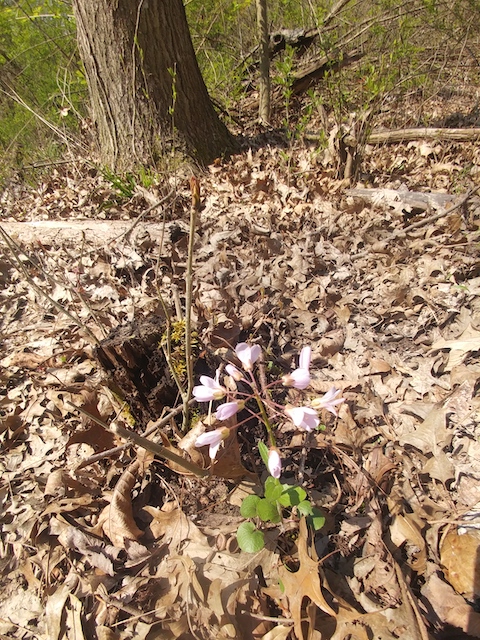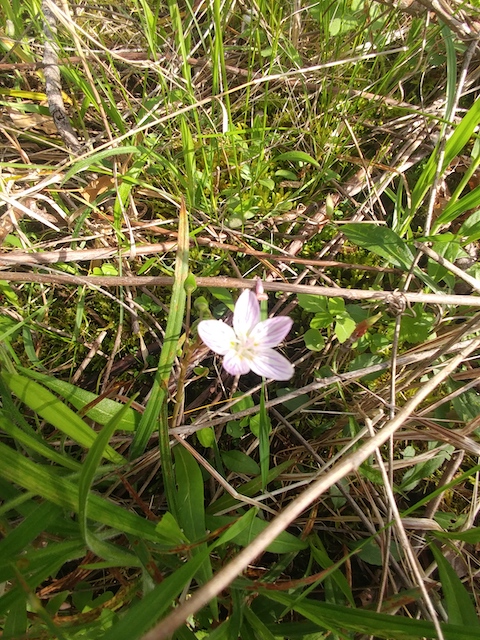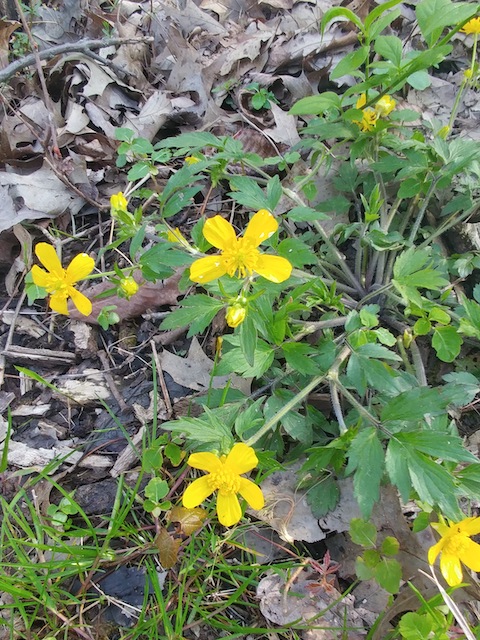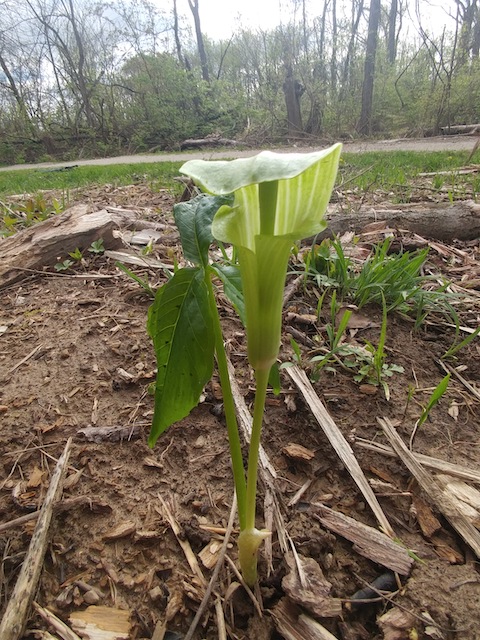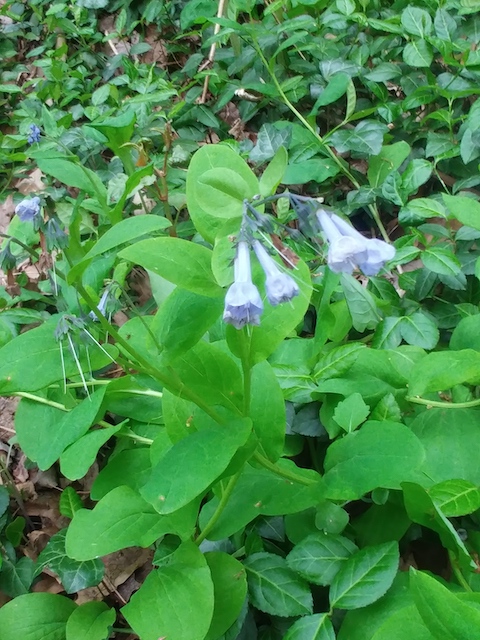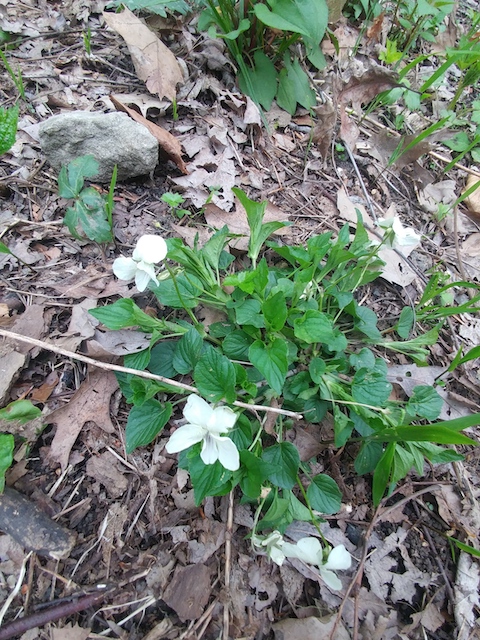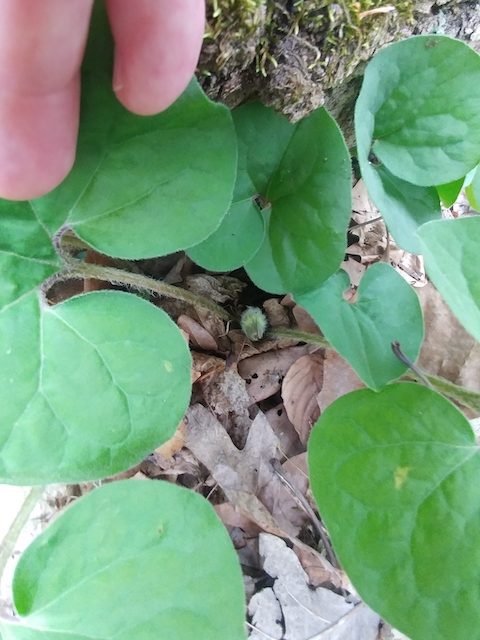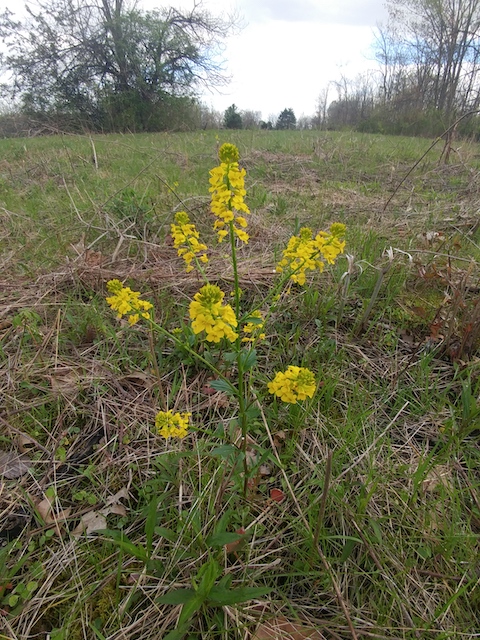
We’re taking another longer “hike” with First UU’s Steve Molk. This week we learn about the springtime wildflowers he has observed in area parks and natural areas. Steve is an avid nature watcher and explorer having led many hikes and fossil hunts as First UU Auction trips.
The month of May continues to have good opportunities to see the spring blooms as they happen; some of them are very short in time, so check the ODNR Wildflower Blog at the link after the article to get information about what is in bloom and where in the state to find flowers. (Note: photos are mini slide-shows, click on the arrows to page through)
Enjoy, Brian Hagemann
Virtual Wildflower Hike with Steve Molk
Spring Wildflowers in Columbus area Metro Parks
Every year, when Spring comes along, my thoughts turn to walking in the woods to survey the wildflowers in bloom. When I was in the Junior Naturalists at Blacklick Woods Metro Park, the first “class” material I remember getting was a fairly comprehensive list describing the Spring wildflowers in the Metro Parks (which at that time numbered only three: Blacklick Woods, Blendon Woods, and Darby Creek). I still remember much of that list and use what I learned from it and Park Naturalist Jim Fry to help me identify flowers.
 Junior Naturalists met weekly, and one important lesson I learned was that the “array” of wildflowers changes every week. To be certain of seeing all the woods has to offer, it’s a good idea to go and look at least once a week. What better time to do that than now, when many of us can’t go to work and are barred from going to libraries, theaters, and our favorite stores? If you are not part of a large group of hikers, wear your face mask, and keep a safe distance from the few other people you see on the trail, these hikes can be a good way to stay in shape and see some of our natural wonders!
Junior Naturalists met weekly, and one important lesson I learned was that the “array” of wildflowers changes every week. To be certain of seeing all the woods has to offer, it’s a good idea to go and look at least once a week. What better time to do that than now, when many of us can’t go to work and are barred from going to libraries, theaters, and our favorite stores? If you are not part of a large group of hikers, wear your face mask, and keep a safe distance from the few other people you see on the trail, these hikes can be a good way to stay in shape and see some of our natural wonders!
Spring wildflowers tend to bloom a little later than your garden bulbs, so a good start date for flower hikes might be late March or early April. So far I have been on three hikes in Sharon Woods, one on the 4-mile bike path and two on the 1.5 mile nature trail, and I have observed many common wildflowers in bloom. Here is a summary of my observations.
On my hike April 8, I saw just a few early bloomers. Wild blue violets are familiar to most of us since they bloom in most lawns. Less familiar may be cutleaf toothwort and bulbous bittercress, both members of the mustard family with small, white flowers with four petals. These two can be distinguished by their leaves: the toothwort has deeply lobed or “cut” jagged leaves suggested by its name, while the bittercress has leaves shaped like long hands with thumbs on both sides.
Also on my April 8 hike, I saw flowers of yellow fawn-lily and sessile trillium. The fawn-lily (also called trout-lily) has yellow drooping flowers with six petals and short pointed-oval leaves dappled with brown markings like a fawn. Sessile trillium, also called toadshade or toad trillium, has small dark-red flowers with three petals that “sit” in the middle of the three almost-circular toad-dappled leaves (the word “sessile” means “having no stem”). I also saw the umbrella-shaped leaves of the mayapple, which doesn’t bloom until later in the Spring.
By the time I took my second hike, on April 22 (this time with my wife Barb), many more flowers were blooming. In addition to those seen on my first hike, we saw at least 12 more species. Wild geranium has pink flowers with five petals and palmately (shaped like the palm of the hand) lobed leaves, reminiscent of a domestic geranium. The great white trillium (seen only in the fenced enclosure on the nature trail) has large white flowers with 3 petals arising from the center of the 3 large pointed-oval leaves. (The fenced enclosure was set up when the park was overpopulated with deer, to save some of the more fragile and rare flower species from being trampled into oblivion.)
Dutchman’s breeches has creamy white flowers shaped like pantaloons hanging upside-down, with delicate frilly leaves like those of a carrot–it is related to the gardener’s bleeding heart. Marsh marigolds has clusters of yellow flowers with 4 to 9 petals and kidney-shaped leaves. Yellow violet has the same “tongued” appearance as the blue violet, but has yellow flowers!
Wild blue phlox is a close relative of common garden phlox. Its flowers have five narrow petals (usually light blue or white) and its leaves are short and oval shaped. Greek valerian is a less-common wild relative of phlox, with cup-shaped blue flowers of five petals and distinctive leaves. These pinnate (arranged on both sides along a spine) leaves give this flower its nickname of “Jacob’s ladder”.
White fawn-lily (or trout-lily) is a less-common relative of yellow fawn-lily with delicate, drooping, white, six-petaled flowers and similar leaves to its yellow sibling.
Garlic mustard is a pesky invasive (non-native plant) with tiny white flowers of four petals that you may have seen in your lawn or garden. Its leaves have a faint garlic odor when crushed. Park staff spend time trying to eliminate this plant, which tends to spread rapidly and choke out native wildflowers (think “starling of the flower world”).
Swamp buttercup is a common wildflower that has five shiny yellow petals and leaves with three maple-leaf-shaped leaflets. Lavender bittercress is a close relative of bulbous, but with small 4-petaled lavender flowers instead of white. The spring beauty is a very common species that has small white flowers with five pink-striped petals, and long very narrow leaves. You may very well have spring beauty in your lawn!
On May 1, I visited Sharon Woods for the third time, this time with my mother Marguerite. We took two short walks, on portions of the nature trail near the outer parking lot and off the end of the paved drive, in the Edward S. Thomas State Nature Preserve.
On our first walk, in a “disturbed” area where the park staff has been cutting brush and clearing dead trees, we saw yellow rocket, white violet, and my first jack-in-the-pulpit of the year. Yellow rocket, aka wild mustard, has small 4-petaled yellow flowers that grow in spikes and tend to inhabit cleared areas. White violets are the same form as blue and yellow violets, but are white, often with blue “highlights”.
Jack-in-the-pulpit is a unique plant whose light green flower resembles a canopied lectern with a green pistil (“Jack”) inside, and a leaf with 3 large leaflets that bears a passing resemblance to poison ivy, except for its lined border.
Over in the state preserve, our short hike revisited the enclosure with the trilliums, which were still blooming gloriously. We didn’t see any new species on this walk, but found many fine examples of flowers seen on previous trips.
In conclusion, I strongly recommend getting out to your favorite Metro Park soon so you can see some of these wildflowers or others I haven’t seen yet this year! If you can’t do this, take a walk from your house to a relatively natural area closer at hand. I live within walking distance of both Iuka and Glen Echo Ravines, and a few days ago Barb and I took a “hike” (aka walk) into Glen Echo Ravine, on the boundary of Clintonville and the University Area.
There we saw many species of wildflowers, including 2 not seen yet this year: wild ginger and Virginia bluebell. Wild ginger has large heart-shaped leaves and inconspicuous flowers with three maroon petals at the base of the leaves. I don’t recommend pulling up wildflowers, but the stem and roots of wild ginger smell the way you would expect. (Wikipedia says it is not closely related to commercial ginger root and NOT to use it in food!) Virginia bluebell is seen in many gardens but is also native to Ohio woods. It has hanging clusters of sky-blue flowers and large oblong leaves.
I am still hoping to see specimens of true and false Solomon’s seal and rue anemone. A great guide to spring wildflowers in Ohio can be found by going online to the Ohio Division of Wildlife Spring Wildflowers of Ohio Field Guide. Happy hiking!
Links to other resources on Ohio Wildflowers
-
- Ohio Division of Natural Resources Wildflower Page – Includes constant updates on what’s in bloom and where to see them.
- Ohio Division of Wildlife Spring Wildflowers of Ohio Field Guide – pdf of full color printed field guide
- Ohio Division of Wildlife Online Field Guides Including Ohio birds, mammals, fish, insects, reptiles & amphibians and more. Great guides right in your browser or on your phone
- Ohio in Bloom: Where to see flowers in Ohio
About Steve:

Steve Molk is a retired science teacher and musician who went to Sunday school from 2nd grade onward at First UU. In high school he was active in Liberal Religious Youth, the youth organization associated with the UU church. He earned a bachelor’s degree in chemistry and music and a master’s degree in geology. He has worked as a high school chemistry teacher, an adjunct professor at two community colleges, and a number of other jobs. Over the years at the church he has sung in the choir for nearly 50 years, and has served on the Nominating Committee and the Green Team. He has donated nature hikes and fossil hikes to the church auction for over 20 years. He enjoys recounting his travels and experiences with birds and other wildlife.
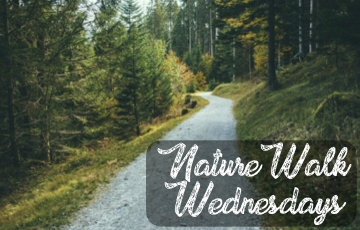
Previous Nature Walks:
- Nature Walk Wednesday – Black Lives Matter pt.2
- Black Lives Matter – Nature Walk Wednesday
- Annual Meeting Countdown – 4 Days to Go!
- Nature Walk Wednesday – Bird Watching in Florida
- Nature Walk Wednesday – Going Camping!
- Nature Walk Wednesday – Spring Wildflowers
- Nature Walk Wednesday – Trip to Vietnam
- Nature Walk Wednesday – Earth Day at 50
- Nature Walk Wednesday – The trail of the Whooping Crane
- Nature Walk Wednesday – Five Metro Parks

